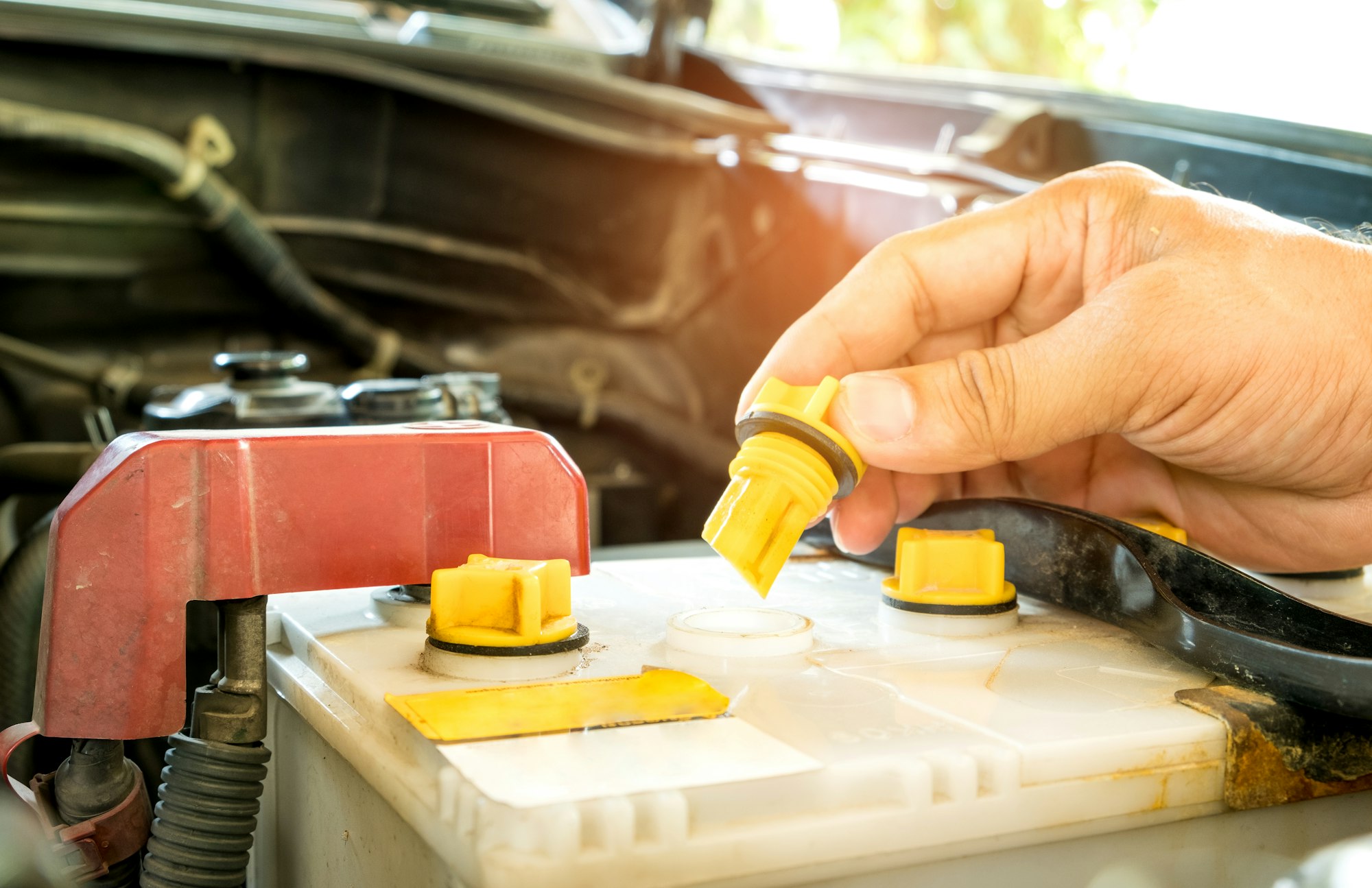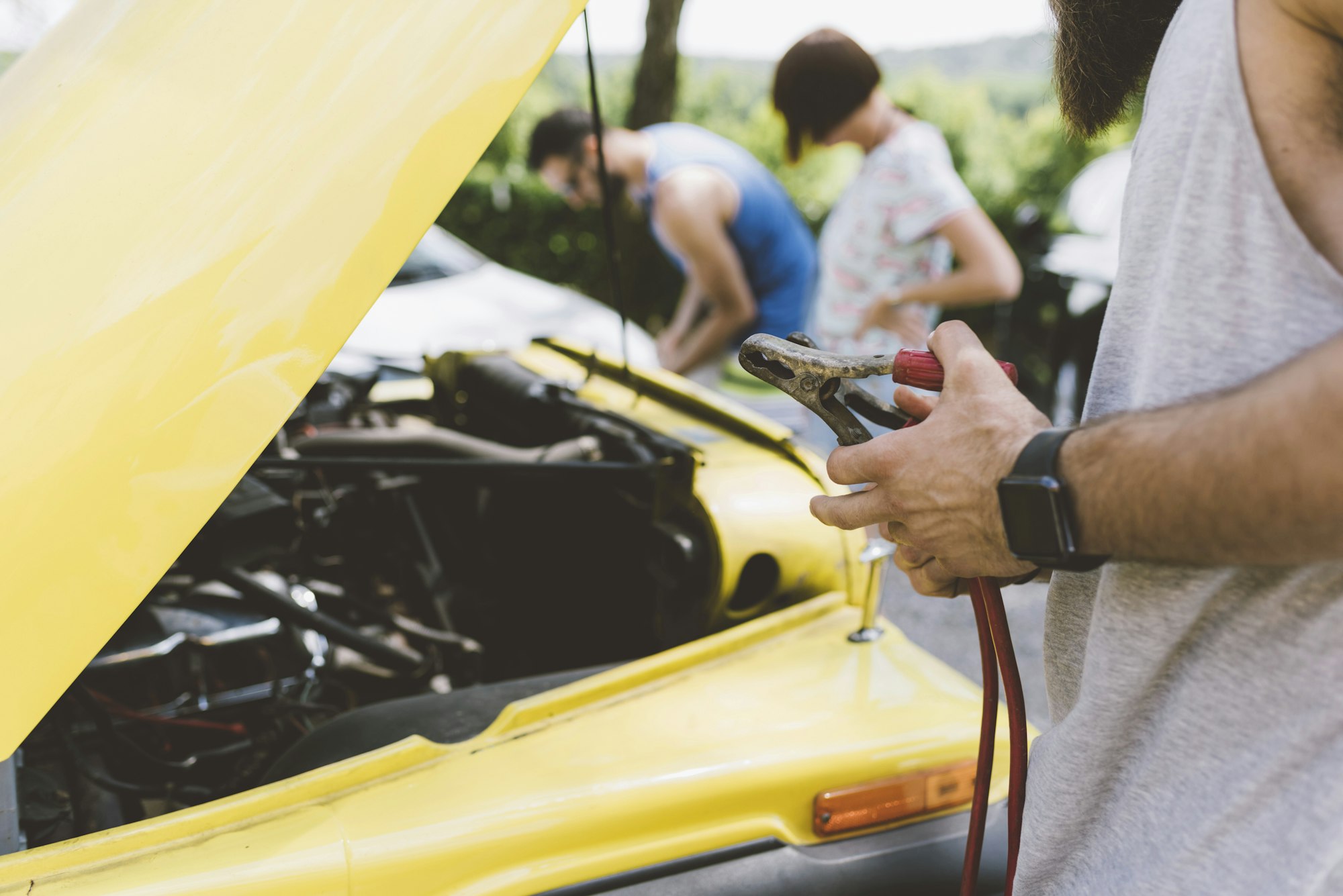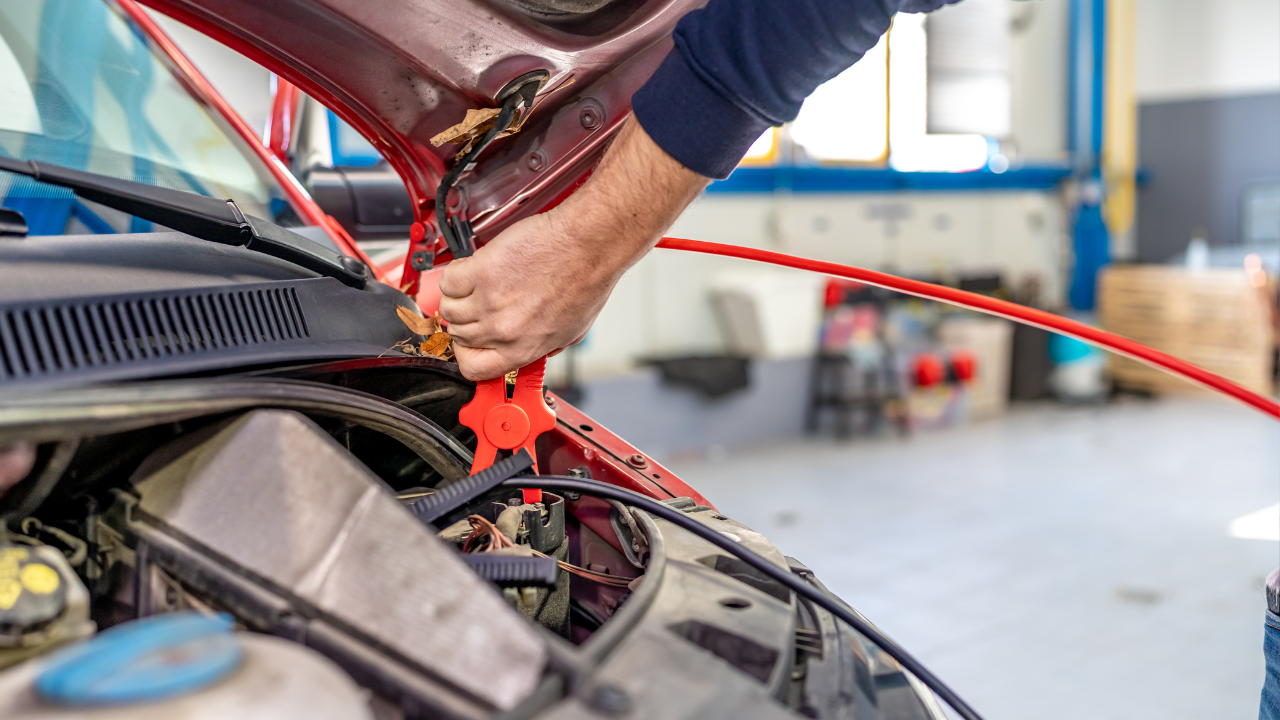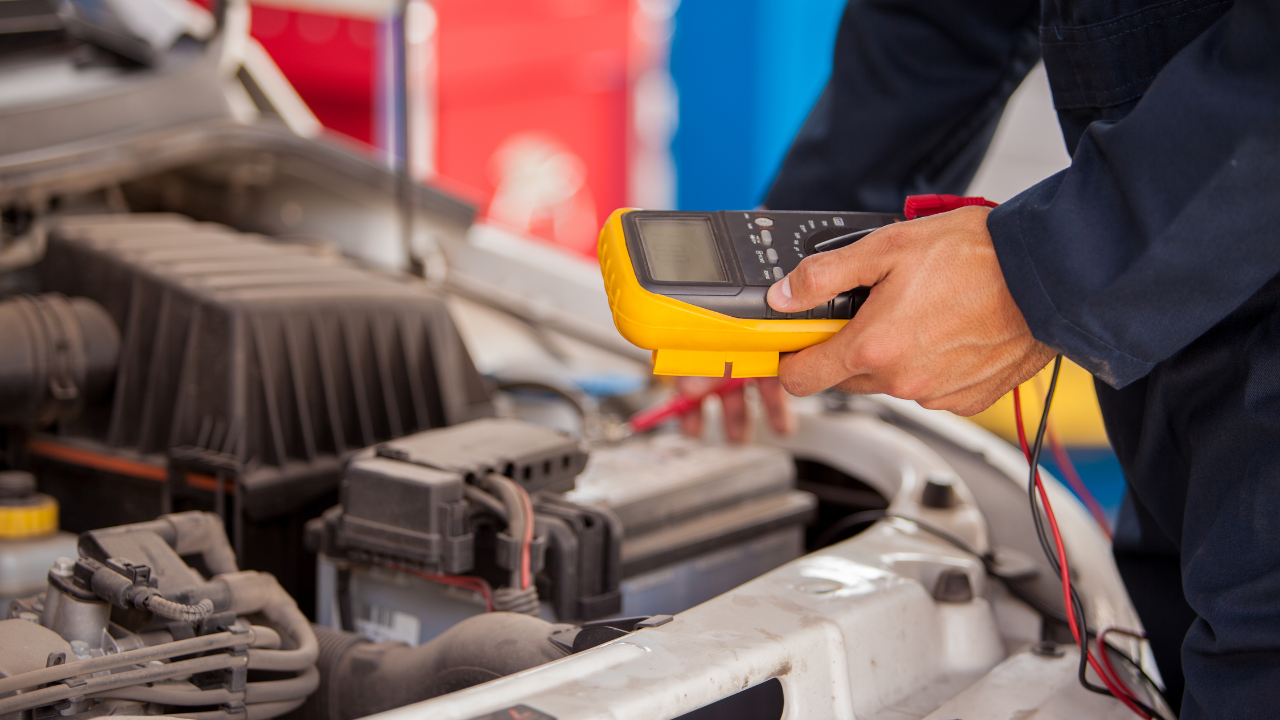A weak car battery can be a frustrating inconvenience, especially when you’re in a rush or far from assistance. However, knowing how to start a car with a weak battery can save you time and hassle. In this comprehensive guide, we’ll explore various methods and tips to get your vehicle running smoothly again, even with a weakened battery. Whether you’re facing a cold morning or a sudden power drain, these techniques can help you get back on the road safely. Don’t let a weak battery slow you down. Try these tips today and remember, for professional battery repair, contact Crossroads Helpline.
Table of Contents
ToggleUnderstanding the Symptoms of a Car With a Weak Battery

Before delving into solutions, it’s crucial to recognize the signs of a car with a weak battery. Symptoms may include slow engine cranking, dimming headlights, electrical issues, and difficulty starting the vehicle, particularly in cold weather. Monitoring these signs can help you anticipate battery problems and take proactive measures to address them.
Safety Precautions
Safety should always be a top priority when dealing with car batteries. Before attempting to start your car with a weak battery, ensure that you’re in a safe location away from traffic. Keep flammable materials, such as cigarettes or gasoline, away from the battery area. Additionally, wear protective gloves and eyewear to prevent injury from corrosive battery acid.
Method 1: Jump-Starting Your Car

One of the most common and effective methods to start a car with a weak battery is jump-starting. To do this, you’ll need a set of jumper cables and a functional vehicle with a fully charged battery. Park the donor vehicle close enough to your car so that the jumper cables can reach both batteries. Turn off both vehicles and engage the parking brakes.
Next, open the hoods of both cars and locate the battery terminals. Identify the positive (+) and negative (-) terminals, which are typically marked with red and black colors, respectively. Attach one end of the red (positive) jumper cable to the positive terminal of the dead battery, then connect the other end to the positive terminal of the donor battery.
Now, attach one end of the black (negative) jumper cable to the negative terminal of the donor battery. However, instead of connecting the other end to the negative terminal of the dead battery, find a metal surface on the engine block or chassis of the disabled vehicle. This grounding point will prevent sparks near the battery, reducing the risk of explosion.
Once all connections are secure, start the donor vehicle and let it run for a few minutes to charge the dead battery. Afterward, attempt to start your car. If successful, leave both vehicles running for several minutes to allow the car with a weak battery to recharge.
Method 2: Using a Portable Jump Starter

If you don’t have access to another vehicle for jump-starting or prefer a more convenient solution, a portable jumpstarter is an excellent alternative. These compact devices contain a built-in battery that can deliver a power boost to start your car. Portable jump starters are easy to use and don’t require a secondary vehicle for assistance.
To use a portable jump starter, begin by ensuring that it’s fully charged. Then, connect the positive (red) clamp to the positive terminal of your car’s battery and the negative (black) clamp to a metal surface on the engine block or chassis, as you would with traditional jumper cables. Follow the manufacturer’s instructions carefully to avoid damaging your vehicle or the jump starter.
Once the connections are secure, switch on the portable jump starter and attempt to start your car. If successful, allow the engine to run for several minutes to recharge the weak battery. Portable jump starters are a convenient option for emergencies or situations where access to another vehicle is limited.
Method 3: Push-Starting Your Car (Manual Transmission Only)

Push-starting, also known as bump-starting, is a technique reserved for vehicles with manual transmissions. While less common than jump-starting, it can be effective in starting a car with a weak battery, provided there’s enough momentum and space available. Keep in mind that this method requires physical effort and may not be suitable for all situations.
To push-start your car, enlist the help of one or more individuals to push the vehicle while you’re inside. Ensure that the ignition is turned to the “on” position and the transmission is in second gear. Once the car gains sufficient speed (usually 5–10 mph), depress the clutch pedal quickly and release it while simultaneously pressing the accelerator pedal.
If executed correctly, the engine should start, and you can continue driving normally. However, be cautious of your surroundings and avoid busy roads or steep inclines when attempting to push-start a vehicle. Additionally, remember that push-starting is not possible with automatic transmissions because of their design.
Preventative Measures for Battery Health

While knowing how to start a car with a weak battery is essential, taking preventative measures can help prolong your battery’s lifespan and reduce the likelihood of future issues. Regularly inspect and clean the battery terminals to prevent corrosion buildup, which can hinder electrical connections. Additionally, avoid leaving accessories running when the engine is off, as this can drain the battery prematurely.
Investing in a quality battery charger or maintainer can also help keep your battery in optimal condition, especially during periods of inactivity or extreme temperatures. Furthermore, consider replacing an aging battery before it fails completely to avoid unexpected breakdowns.
Conclusion
Dealing with a car with a weak battery can be a frustrating experience, but knowing how to start your vehicle under such circumstances can provide peace of mind and save you from inconvenience. Whether you opt for traditional jump-starting, use a portable jump starter, or employ manual push-starting, following safety precautions and proper techniques is essential.
By understanding the symptoms of a weak battery and taking preventative measures, you can minimize the likelihood of encountering battery-related issues in the future. Remember to prioritize safety at all times and seek professional assistance if needed. With these tips and methods, you’ll be well-equipped to handle a weak battery situation effectively and get back on the road with confidence. Next time your battery struggles, you’ll be prepared. Take action with our tips, and keep Crossroads Helpline in mind for any battery repair needs.

